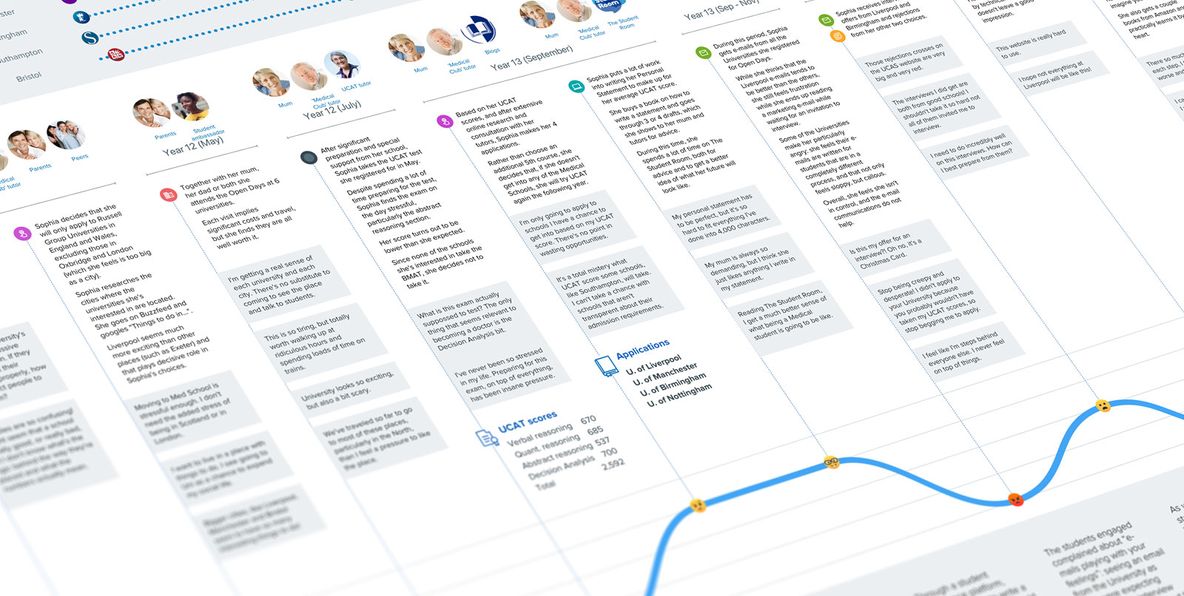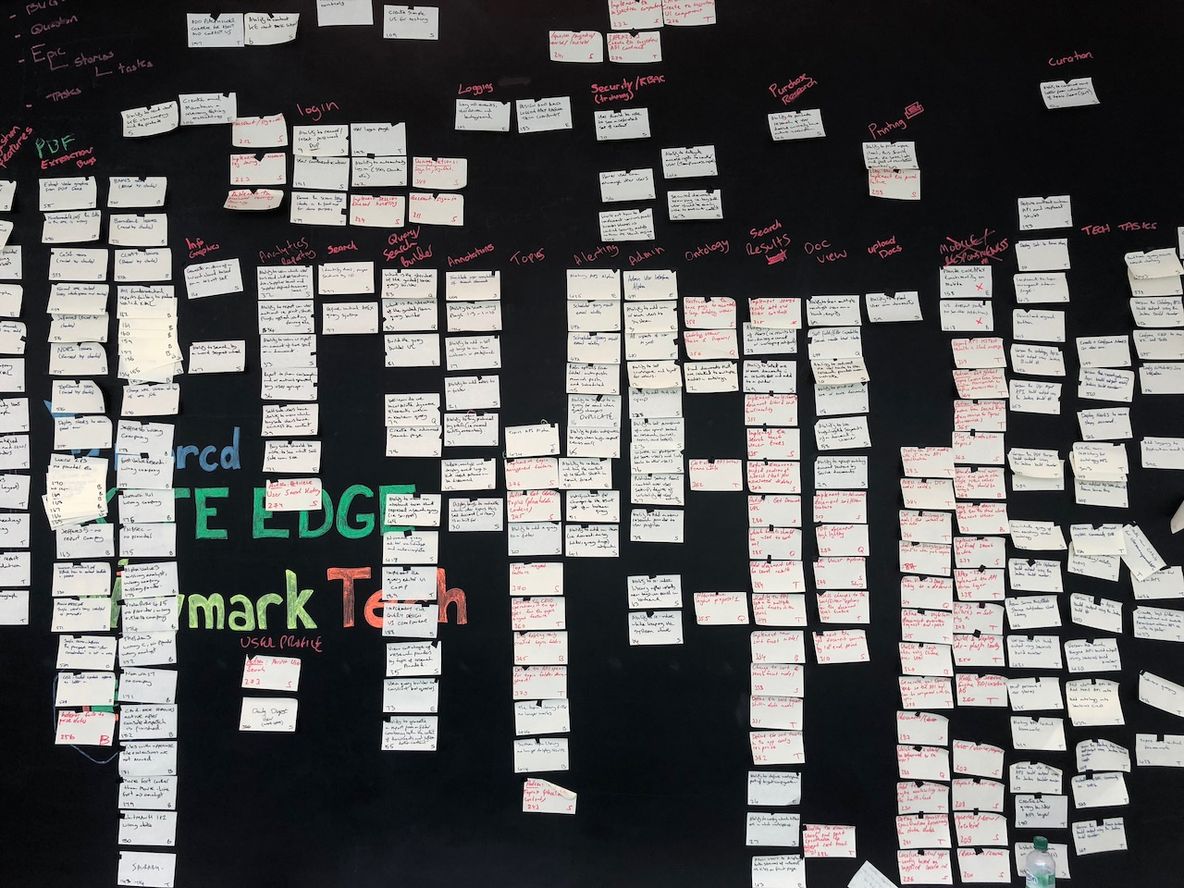This case study discusses my work as UX Lead for a global non-profit client whose aim is to set standards for sustainable fishing and ending overfishing around the world.
Connecting Data and People
This project was original commissioned to explore two big ideas. Firstly, the objectives of this non-profit is achieved by ensuring that seafood products sold in stores are increasingly produced from Fisheries with their own sustainable certification. It is uniquely positioned as it has relationships with multiple stakeholders from ‘bait-to-plate’, allowing it to connect commercial demand with opportunities for certified producers. It was believed connecting datasets from each stakeholder-responsible business area and making it easy to discover insights, would have significant impact.
Secondly, this non-profit invests time in building relationships with commercial providers to maximise the value of certified stock. We identified that streamlining the administrative and information gathering processes could make a significant impact in terms of time-efficiency. A new client platform could giving easy access to the right information and streamline processes to aid with retention and brand protection.
Ch... Ch... Changes
This client project was caught up in the closure of a large digital transformation company I worked for. Along with the Chief Experience Officer I was asked to complete the next phase of the project as independent contractors. Furthermore, midway through the project the non-profit shared their intention to strategically re-structure their current digital team and focus on digital comms. Realising there was little appetite for a digital transformation project on the scale we had intended, and not wanting to loose the project or work we had undertake, we re-negotiated a scaled-back scope.
We were asked to:
- Explore how the stakeholder digital experience could be improved via the introduction of new systems, interfaces or portals.
- We were to use detailed experience mapping of the relevant user groups to identify opportunities
- Use the experience maps to support the rollout and assessment of an ongoing CRM build project.
What I did:
- I co-defined and facilitated two full-day whiteboard discovery workshops with nine senior cross-departmental employees
- Synthesised the information from the workshop into seven experience maps (CABs, Large Fisheries, Chain of Custody, Consumers, Journalists, Academics, NGOs) in Sketch@
- engaged with non-profit to iterate the outputs including zoom calls and a third and final collaborative workshop
- Finally, I delivered my findings to senior management.
Facilitated Mapping Workshops
The workshops aimed to outline each stakeholder's relationship with the non-profit, its data, content, and people over time. This would highlight opportunities aligned with the project's initial objectives. We divided the seven mapping activities between the two workshops, addressing the most complex first.
The initial session started with small groups, organized by stakeholder specialization, creating posters detailing needs, data, and potential challenges. We referred to these posters while mapping each stakeholder's journey. All participants were involved in the mapping exercise, and we documented each completed map with photographs.
Once all the maps were complete, we revisited the initial poster exercise and brainstormed speculative digital tools that could address each stakeholder's opportunities.
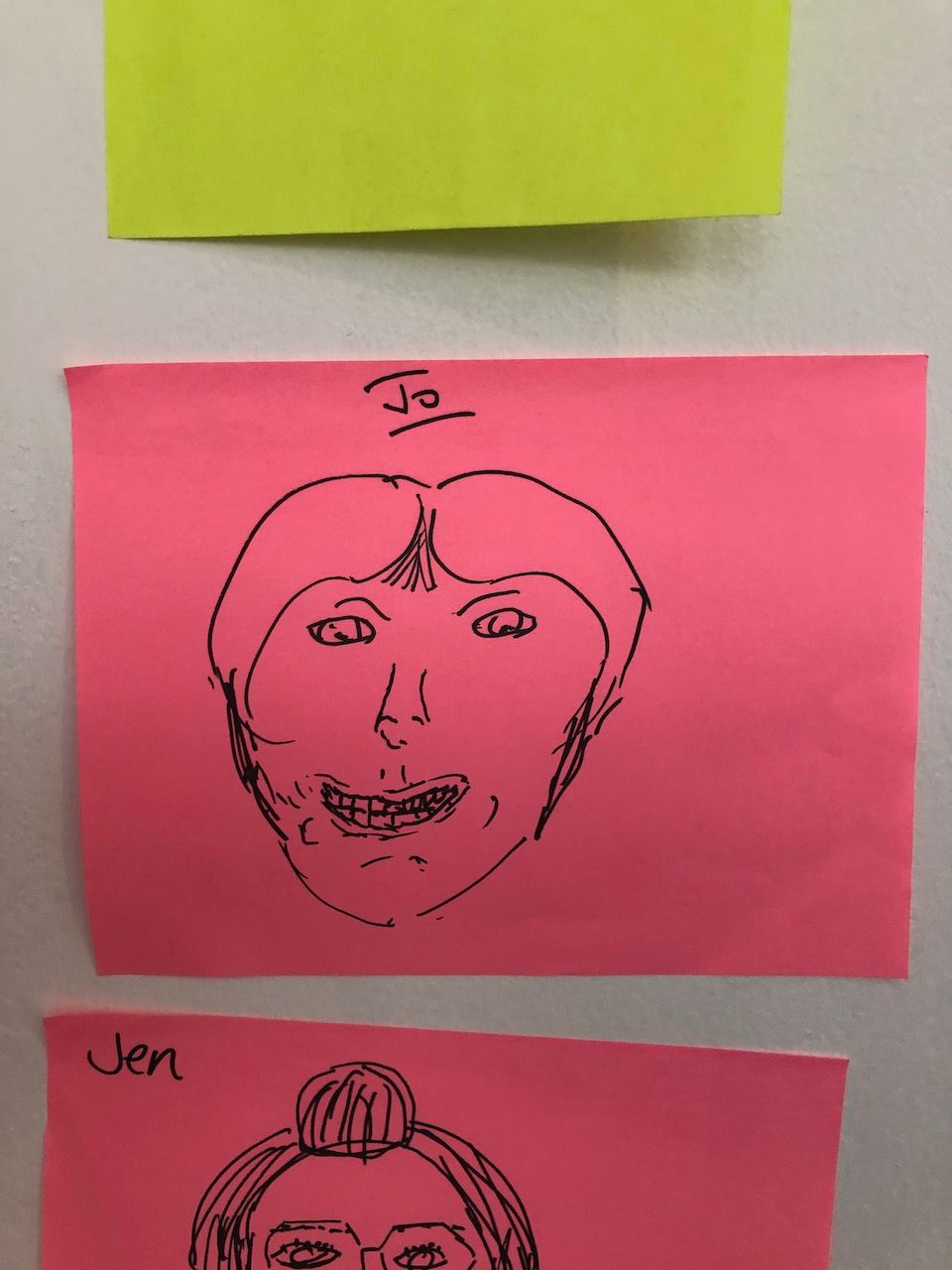
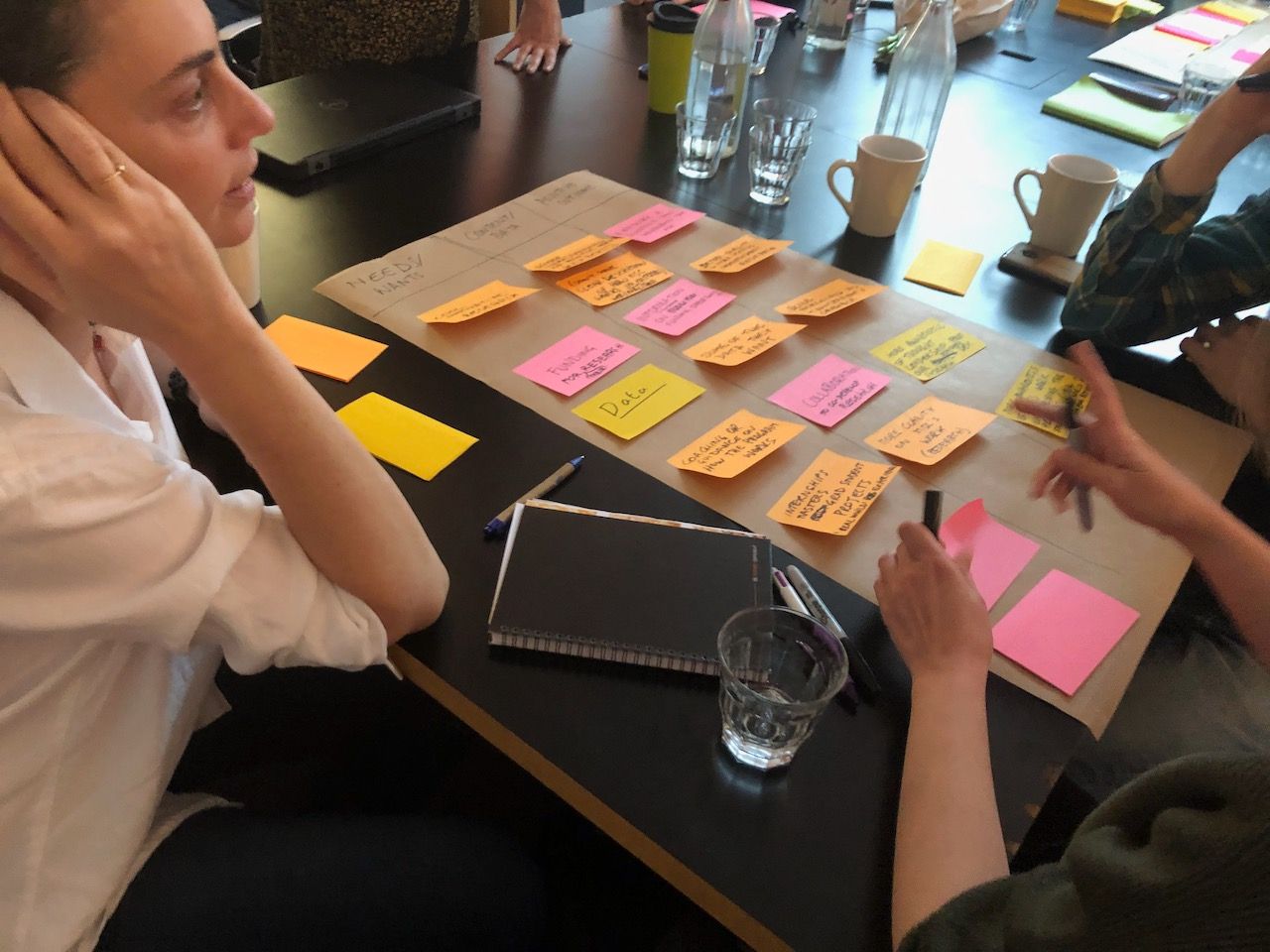
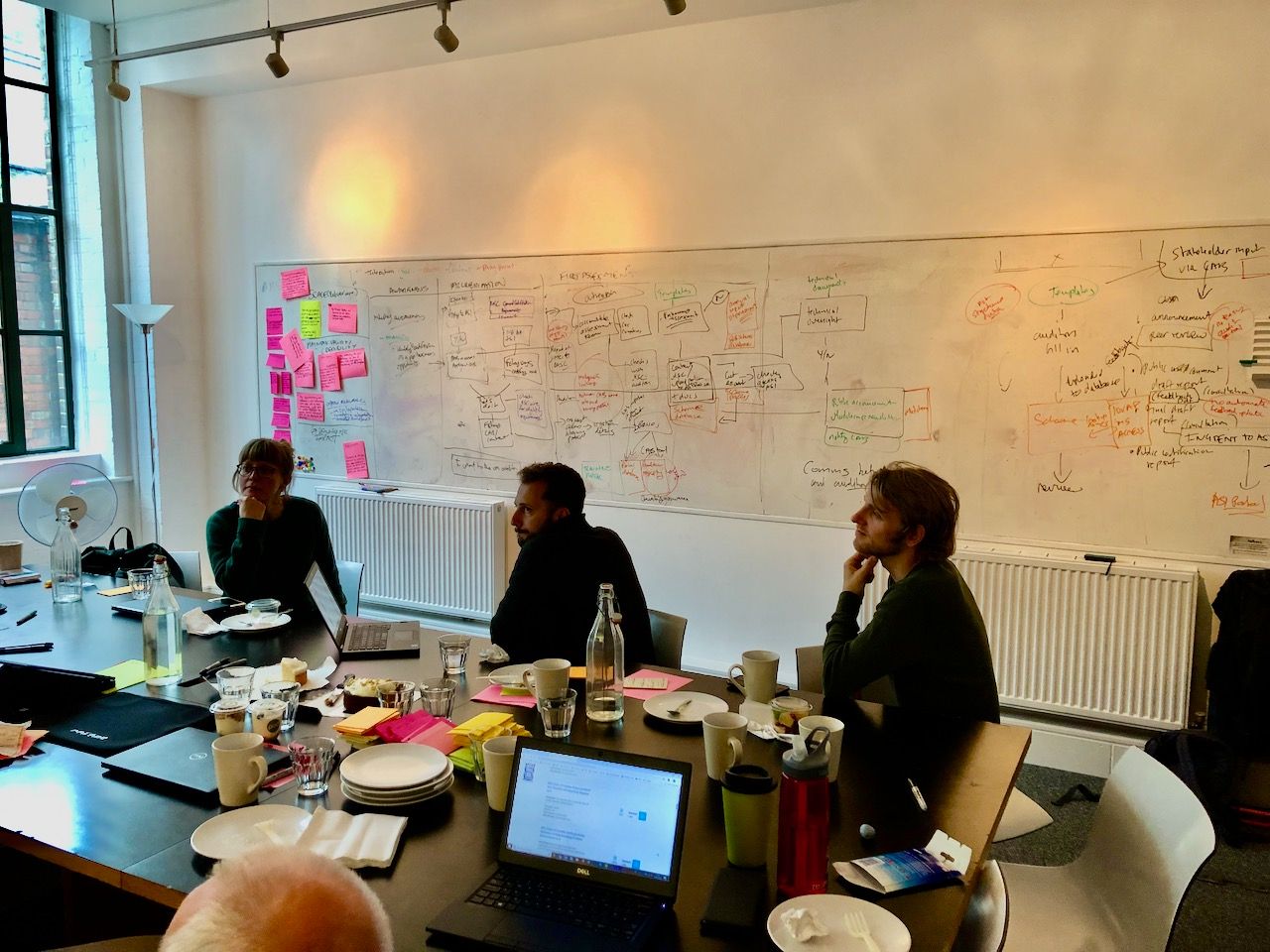
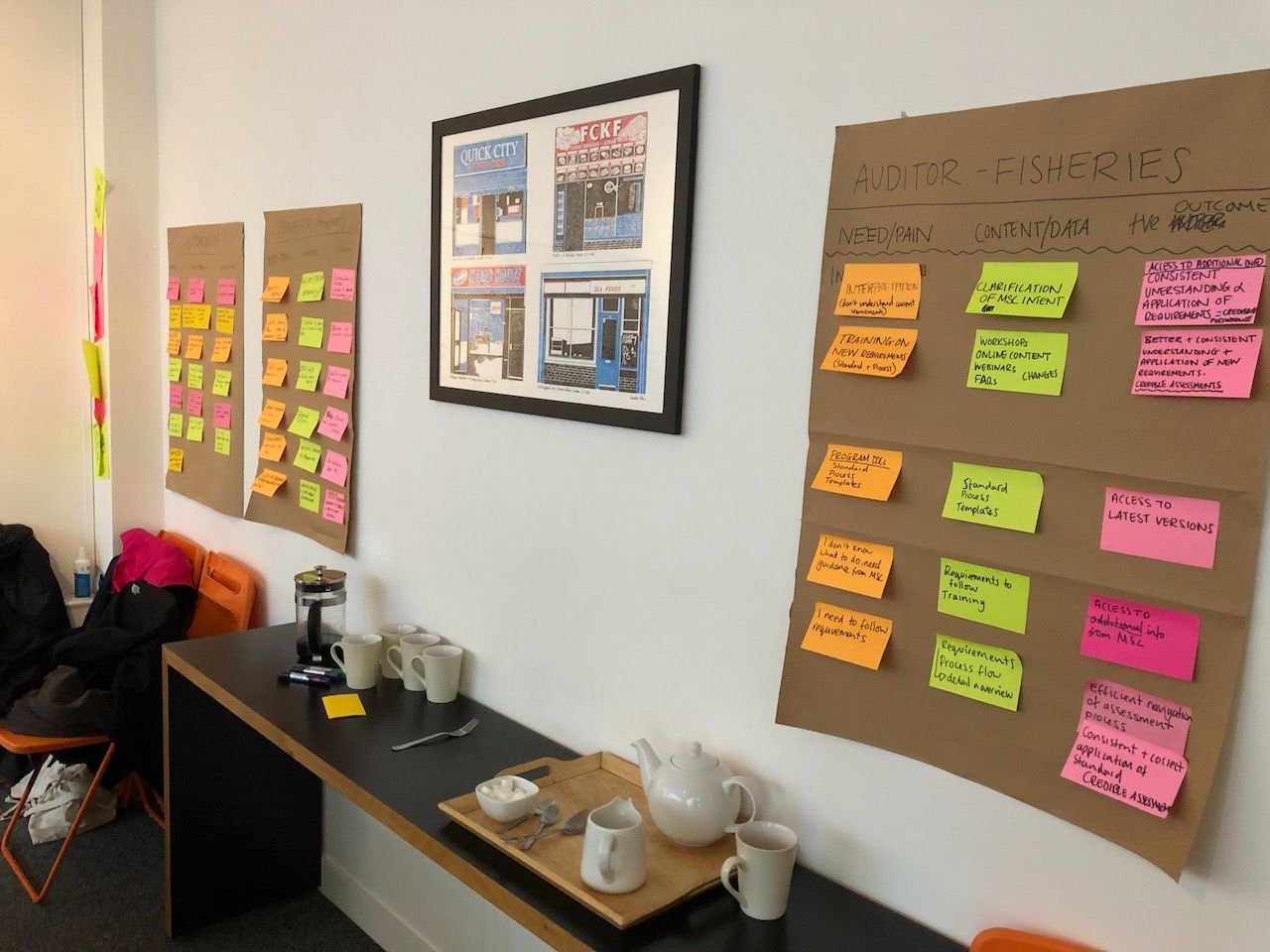
To synthesize the collected data, I imported the photos into Omnigraffle and manually extracted the text. I created a tabular version of the data for experimenting with different data display methods before settling on an agreed-upon approach. I then crafted the first iterations of each map in Sketch.
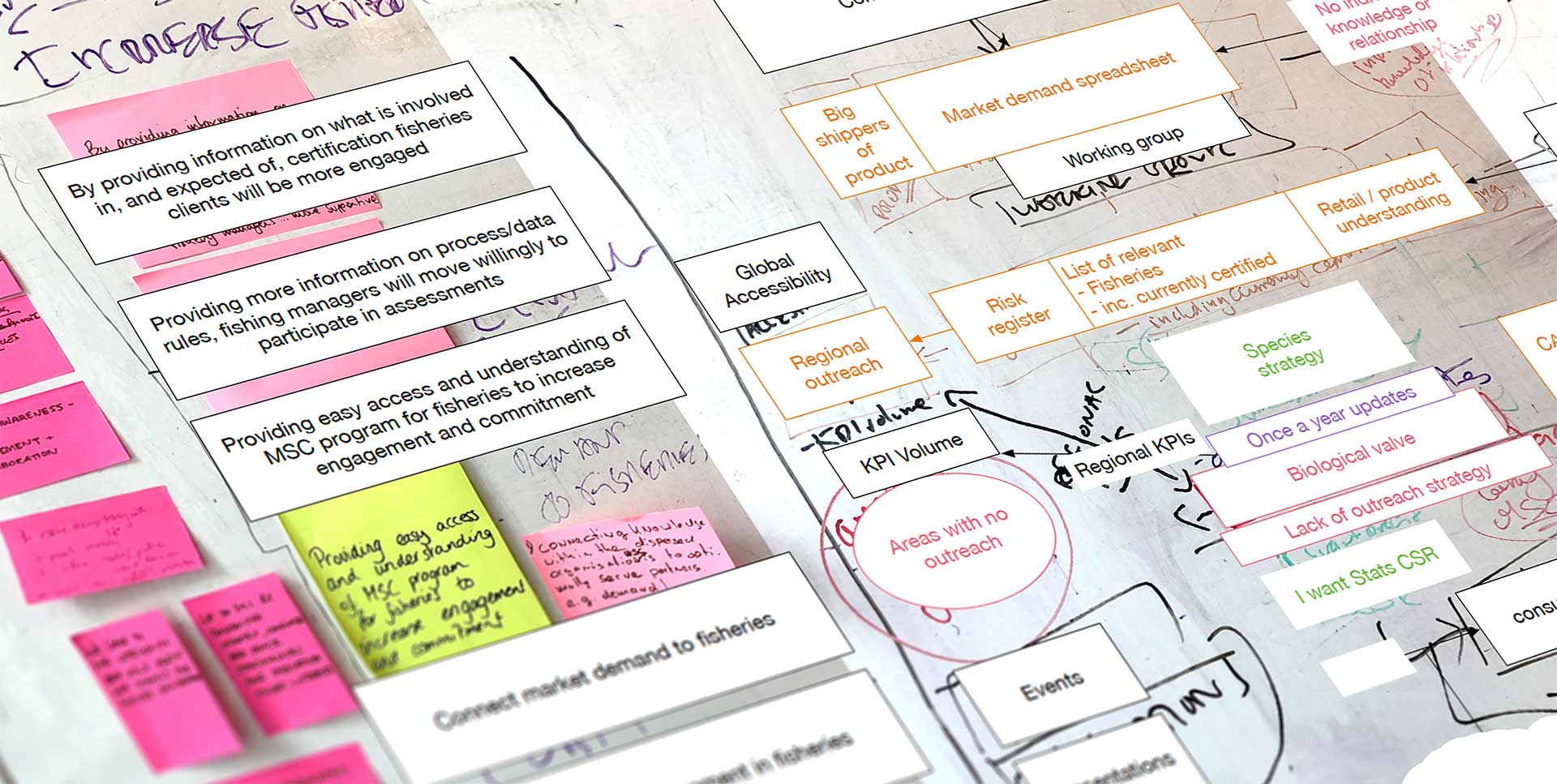
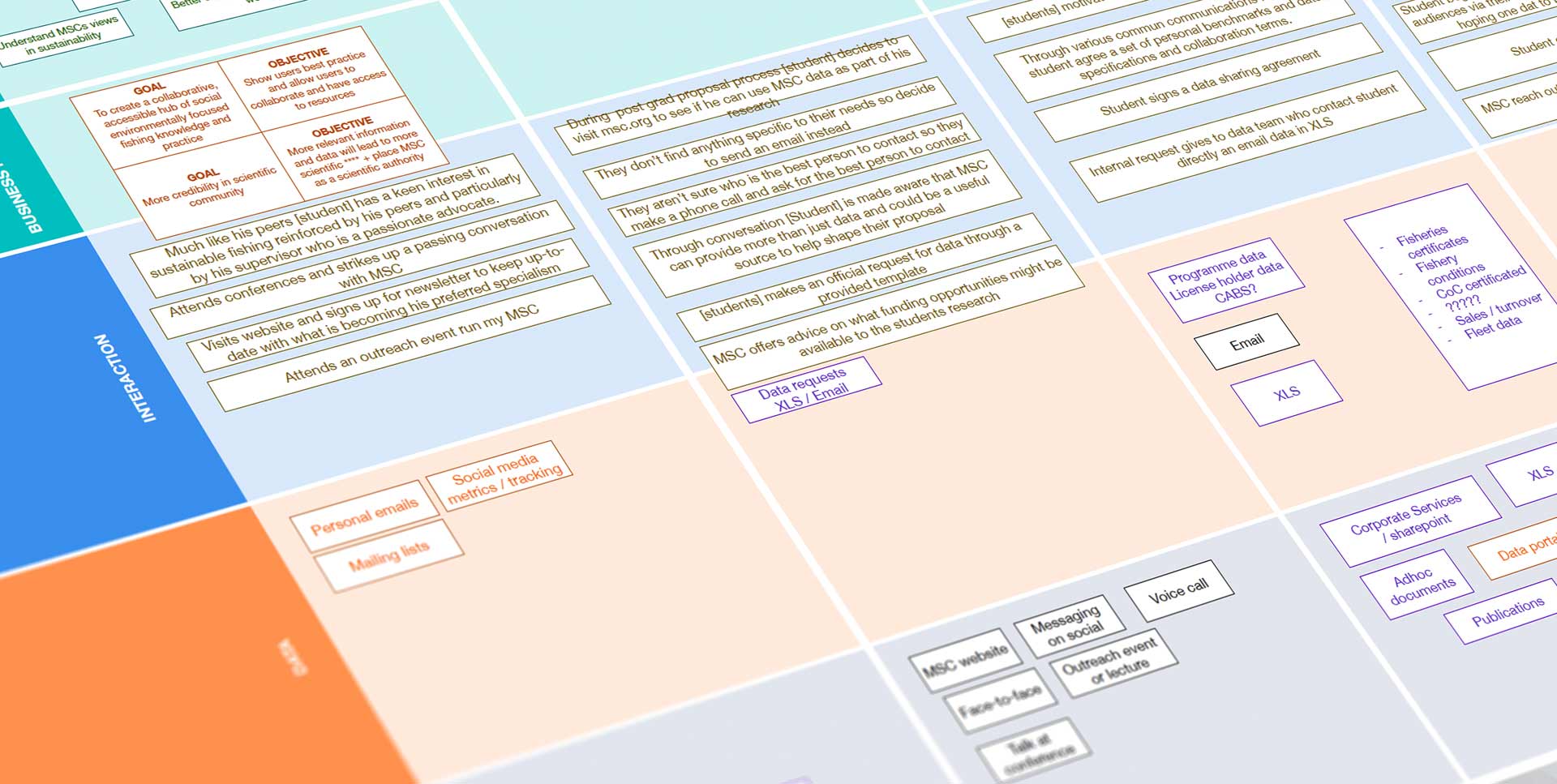
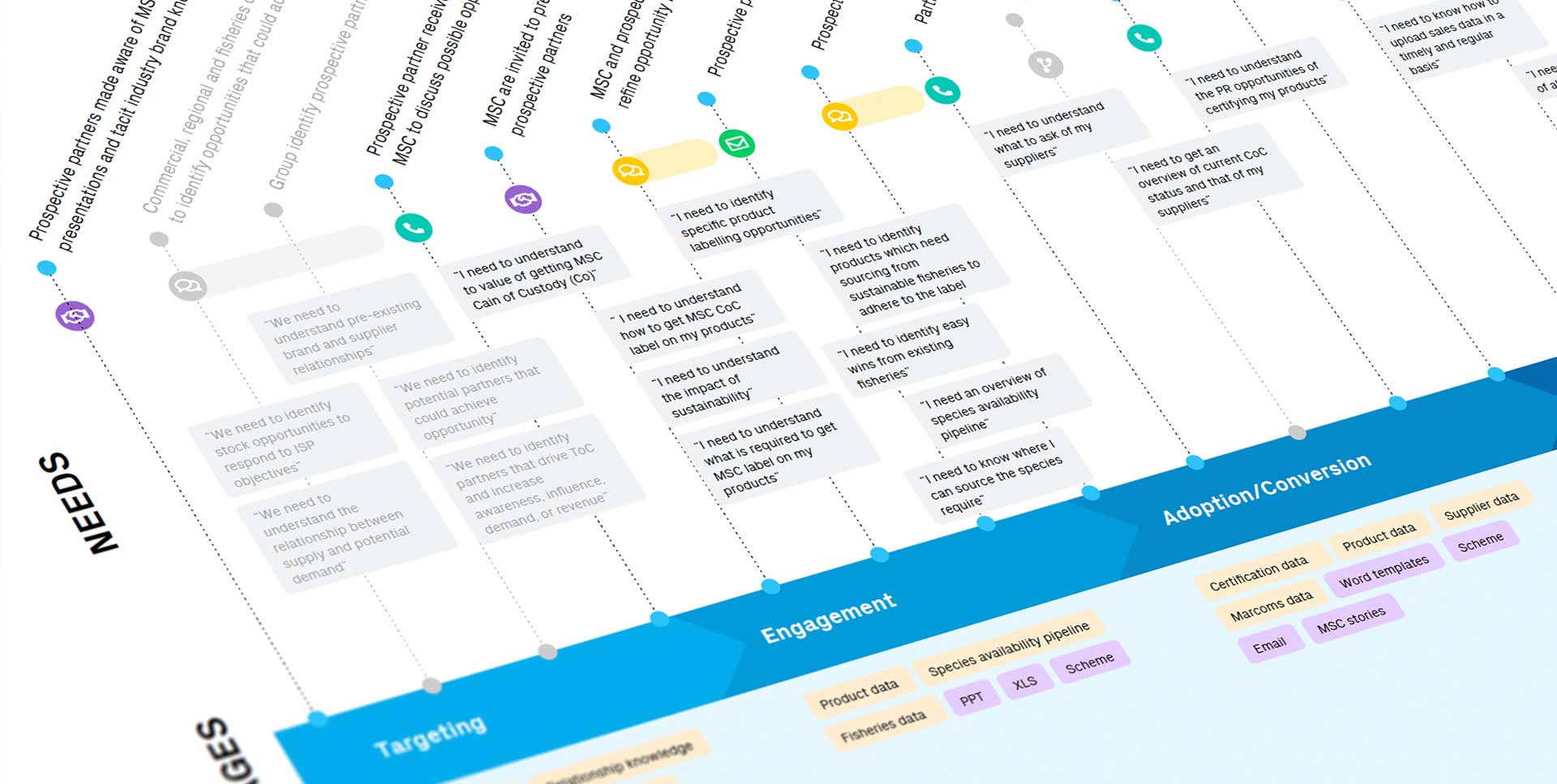
Zoom calls were scheduled with each team to resolve any queries I had regarding my data interpretation. Upon reaching a satisfactory result, a final workshop was arranged. Large printouts of each map were laid out on tables, and attendees were invited to annotate directly on the maps. These edits were incorporated into the final version, which was provided ahead of our findings presentation to the senior management.
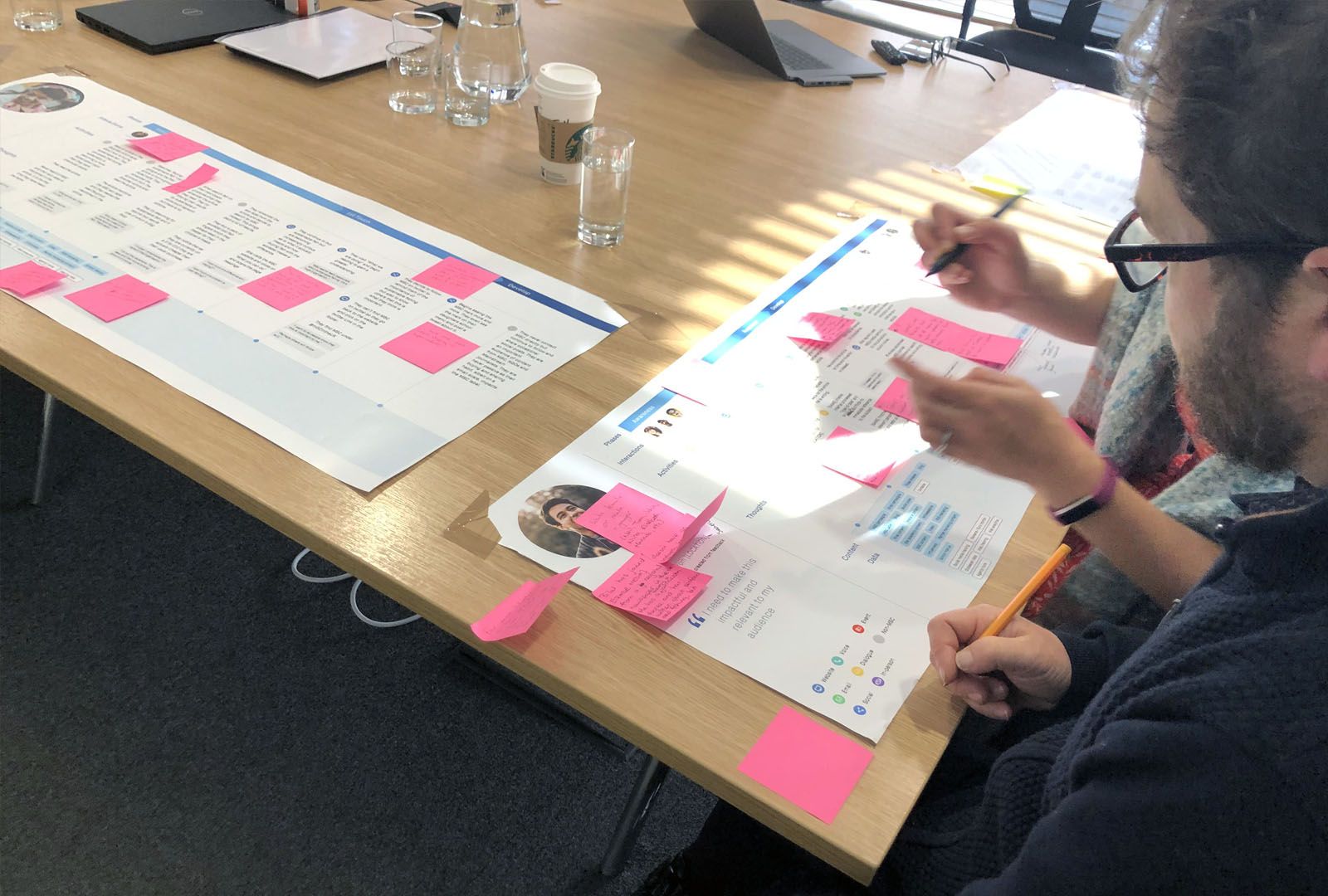
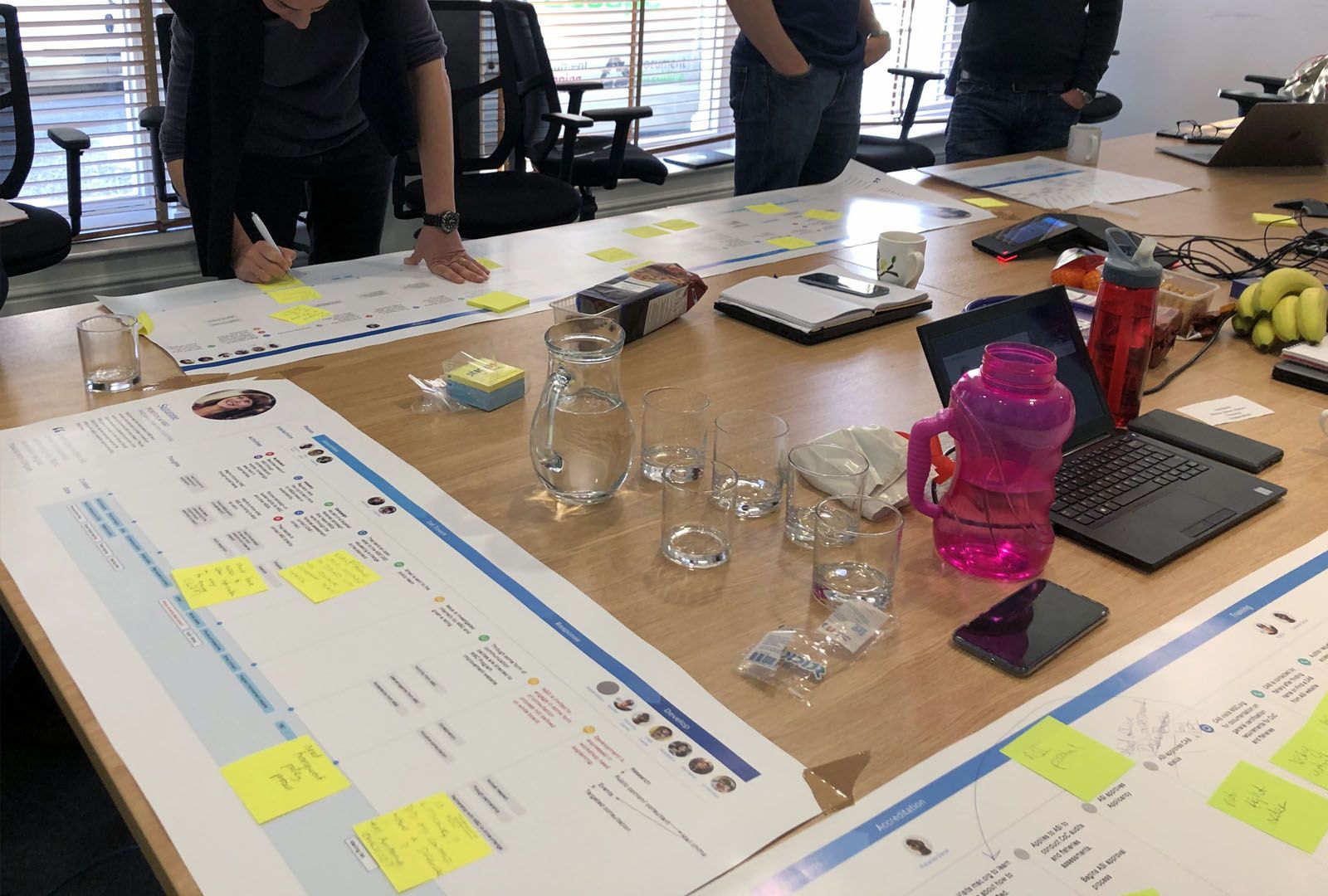
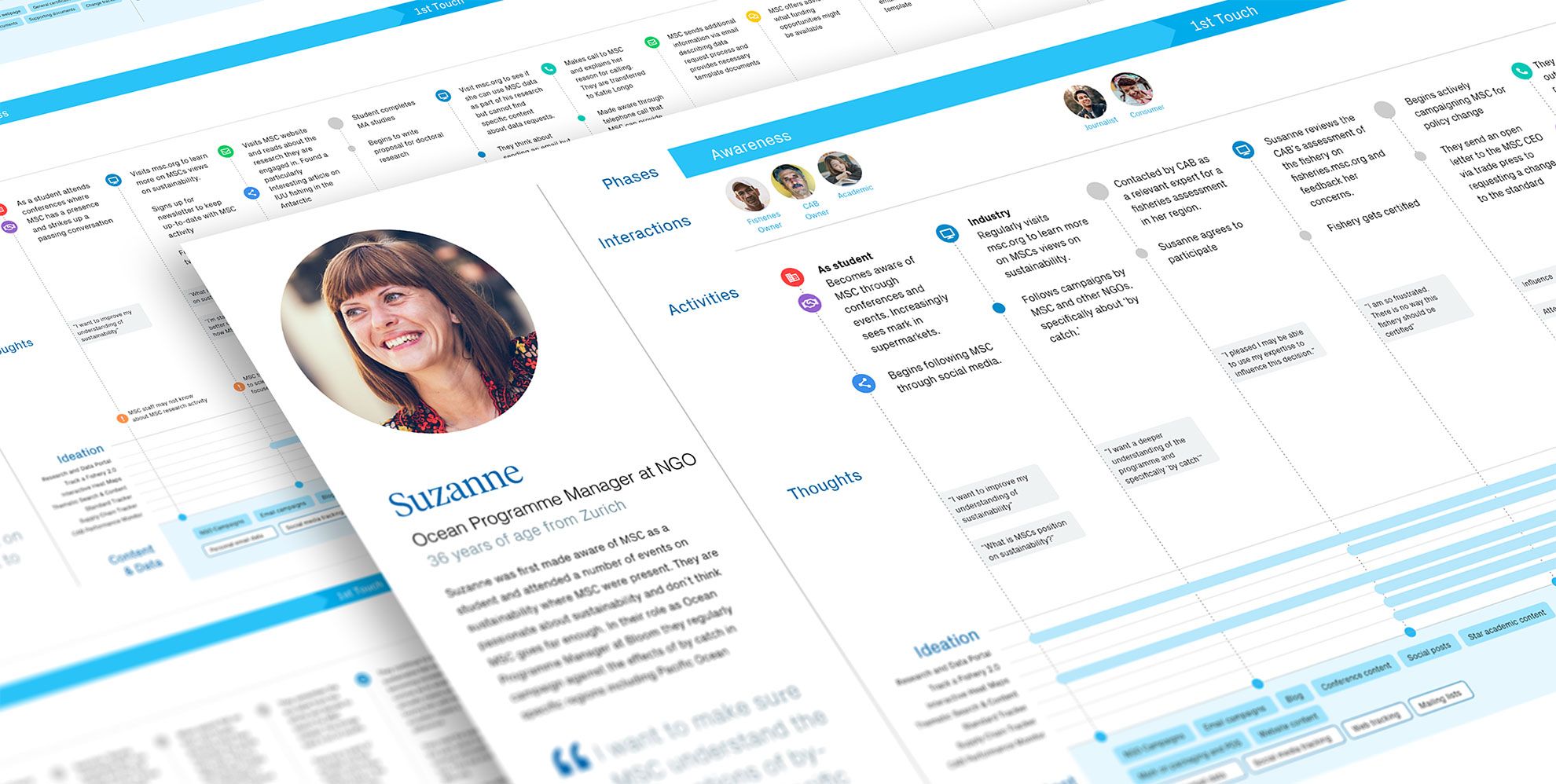
Diving into an Ongoing Project
Transitioning into the role of UX Lead midway through the non-profit's relationship with my employer presented a unique challenge. Not only was I expected to ensure a seamless handover from the previous lead, but I also needed to swiftly grasp the intricate digital processes and extensive desk-based research that defined this project. Amidst the numerous changes the project underwent, my greatest task was to understand each non-profit team's processes and data needs as they nurtured relationships with seven distinct stakeholders.
The workshops brought together participants with deep knowledge in their respective fields, and a significant portion of the maps we created encapsulated complex business processes pertaining to global certification standards. My personal challenge lied in distilling this wealth of information into a format that was more digestible, relevant, and comprehensive than the previously provided documentation. This was an essential task, crucial for the project's success, as it would aid in assessing and supporting the implementation of the non-profit's CRM project.
Project Outcomes and Impacts
Contracting often poses a challenge when discussing outcomes or impacts, as one might depart the project before a comprehensive impact analysis is conducted. This project followed a similar trajectory. While my contributions were well-received, I suspect the shifting dynamics in digital management may have led our work to potentially miss the intended audience. Nonetheless, the work conducted during this project was significant, and I believe it set the groundwork for potential future enhancements and improvements.

